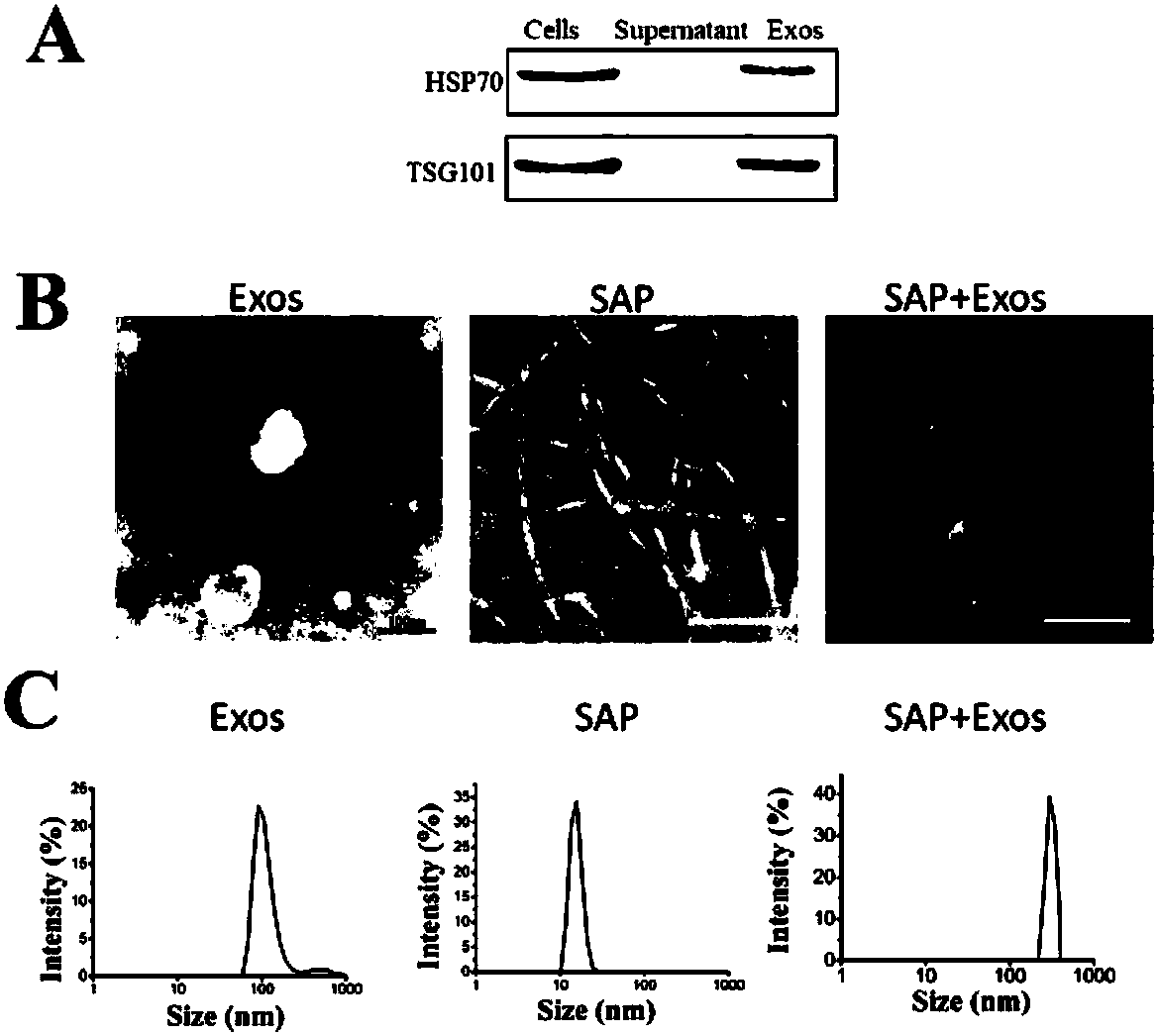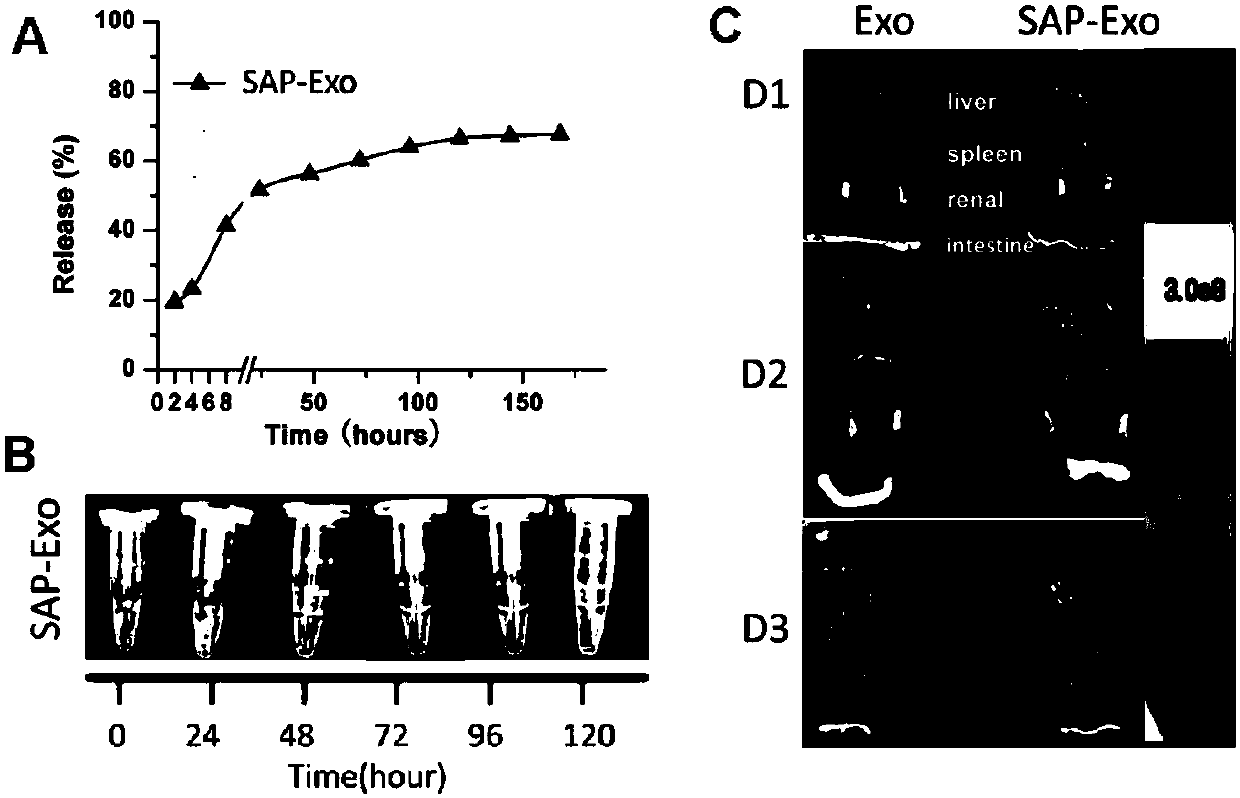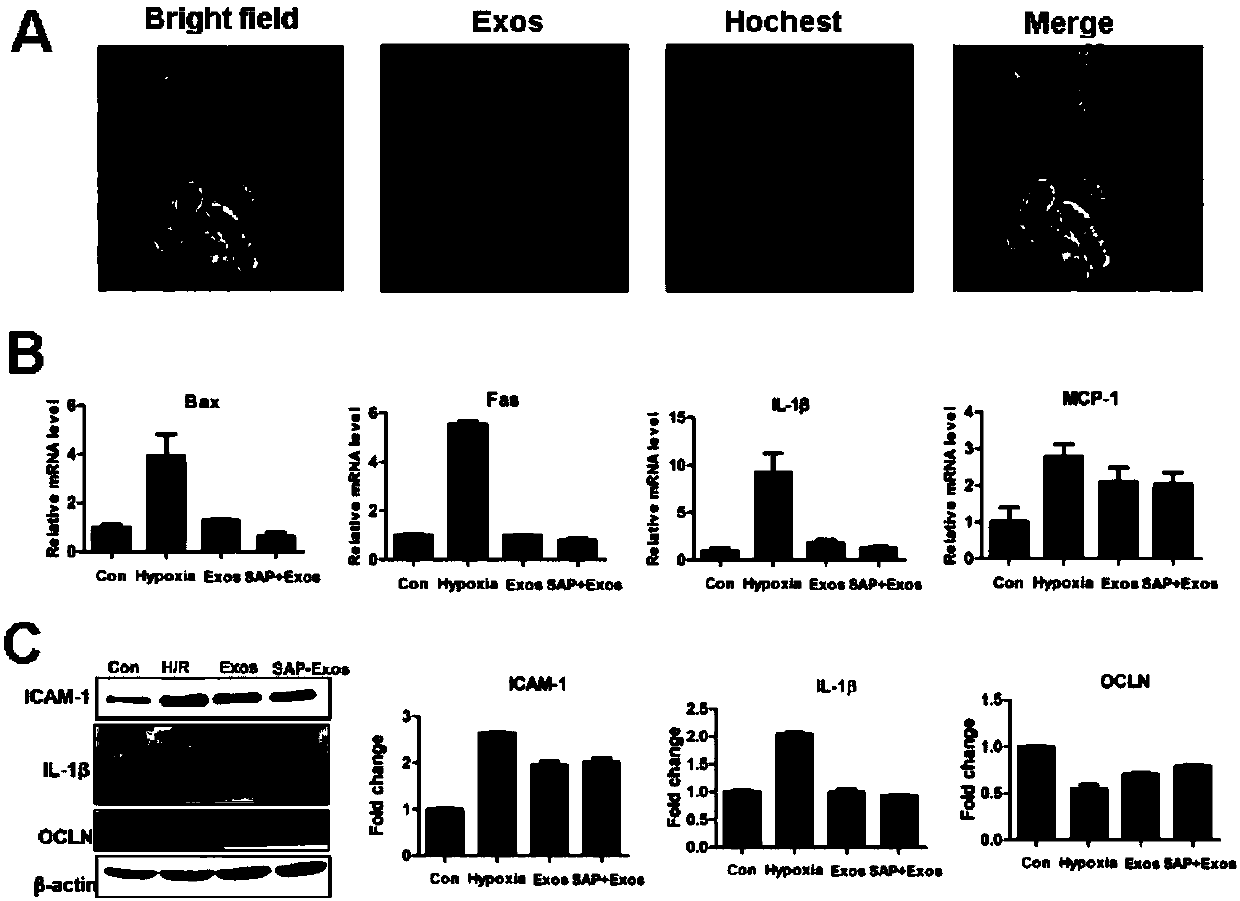Polypeptide hydrogel with slow-release exosomes and preparation method and application thereof
A hydrogel and exosome technology, applied in the fields of peptides, liquid delivery, pharmaceutical formulations, etc., can solve problems such as short half-life, and achieve the effect of slowing release, prolonging half-life, and having good clinical application prospects.
- Summary
- Abstract
- Description
- Claims
- Application Information
AI Technical Summary
Problems solved by technology
Method used
Image
Examples
Embodiment 1
[0033] Example 1 Preparation of Exosomes derived from MSCs of the present invention
[0034] The preparation method is as follows:
[0035] 1. MSCs primary culture: Mice were killed by neck dislocation, soaked in 70% alcohol for 10 minutes for disinfection, the bilateral tibiae were separated, the bone marrow was washed with serum-free medium, the washing liquid was collected, centrifuged and resuspended, and MSCs were obtained by the adherent method.
[0036] 2. Culture medium collection: MSCs were cultured in DMEM medium (Gbico, USA) supplemented with 10% exosome-depleted fetal bovine serum (Exosome-depleted FBS, SBI, USA), and the culture supernatant was collected regularly.
[0037] 3. Centrifugal extraction: extract Exos by multiple centrifugation methods, centrifuge at 2000g×10 minutes to remove cell debris, centrifuge at 10000g×30 minutes to remove microvesicles (MVs), and centrifuge at 100000g×60 minutes to obtain Exos.
[0038] 4. Purification: The Exos obtained in t...
Embodiment 2
[0039] Embodiment 2 The preparation of polypeptide hydrogel of the present invention
[0040] According to the treatment requirements of the present invention, the hydrogel sustained-release Exos is used, and the sustained-release system is determined as follows according to the preliminary experimental results (therapeutic effect), experimental animals (C57 mice) and application sites (mouse kidney capsule):
[0041] Element Concentration (mg / ml) Volume (μl) Exosomes (Exos) 8 10 Self-assembled short peptide KMP2 10 13 sterile water 10 3
2 total 25
[0042] (1) The self-assembled short peptide KMP2 (KLDLPVGLIGKLDL) was synthesized and purified by Shanghai Botai Biotechnology. The dry powder was dissolved in sterile water to make a 10mg / ml stock solution, and 13μl was added to a 1.5ml EP tube;
[0043] (2) Add 10 μl of Exos derived from mesenchymal stem cells with a concentration of 8 mg / ml into the EP tube, mix well and set asi...
Embodiment 3
[0048] Embodiment 3 Preparation of polypeptide hydrogel of the present invention
[0049] (1) The self-assembling short peptide KMP2 (KLDLPVGLIGKLDL) was synthesized and purified by Shanghai Botai Biotechnology. Dissolving 300ug self-assembling peptide in 20μl water to make self-assembling peptide aqueous solution; dissolving 100ug exosomes in 15μl water to make exosomes Aqueous solution; add to EP tube;
[0050](2) Add 5 μl of water to the self-assembling peptide aqueous solution and exosome aqueous solution obtained in step (1) to make a total of 40 μl, and mix evenly to obtain a polypeptide hydrogel.
[0051] Prove beneficial effect of the present invention below by specific pharmacodynamics experiment:
PUM
| Property | Measurement | Unit |
|---|---|---|
| diameter | aaaaa | aaaaa |
Abstract
Description
Claims
Application Information
 Login to View More
Login to View More - R&D
- Intellectual Property
- Life Sciences
- Materials
- Tech Scout
- Unparalleled Data Quality
- Higher Quality Content
- 60% Fewer Hallucinations
Browse by: Latest US Patents, China's latest patents, Technical Efficacy Thesaurus, Application Domain, Technology Topic, Popular Technical Reports.
© 2025 PatSnap. All rights reserved.Legal|Privacy policy|Modern Slavery Act Transparency Statement|Sitemap|About US| Contact US: help@patsnap.com



